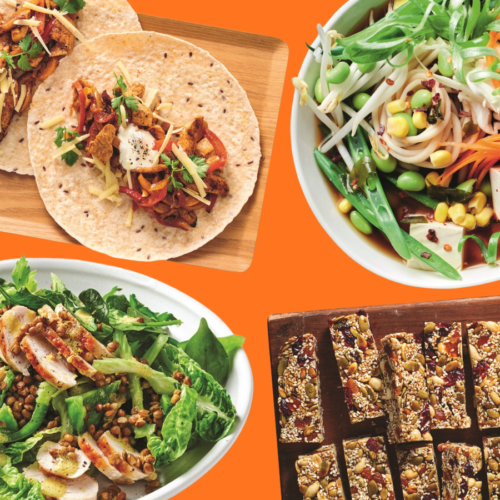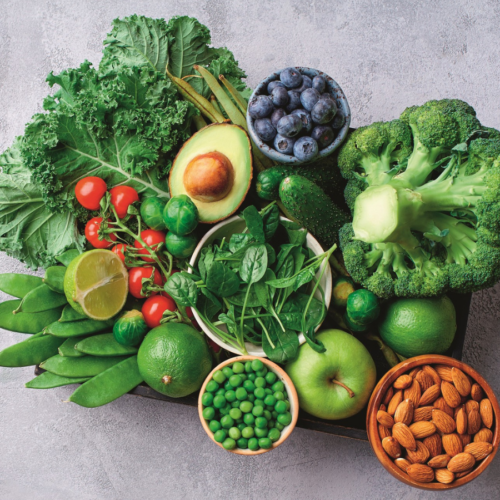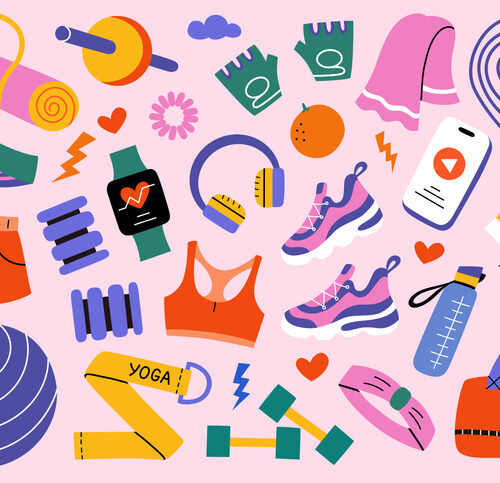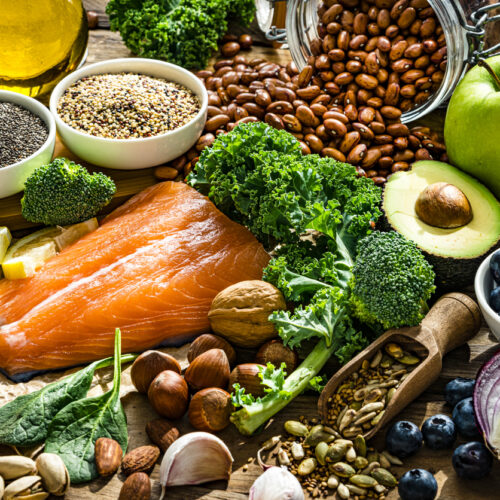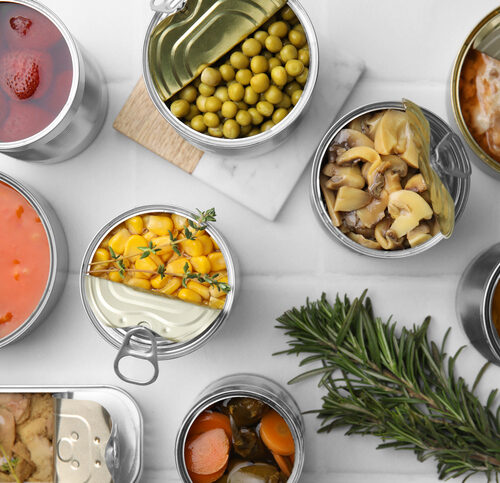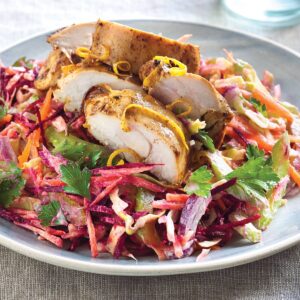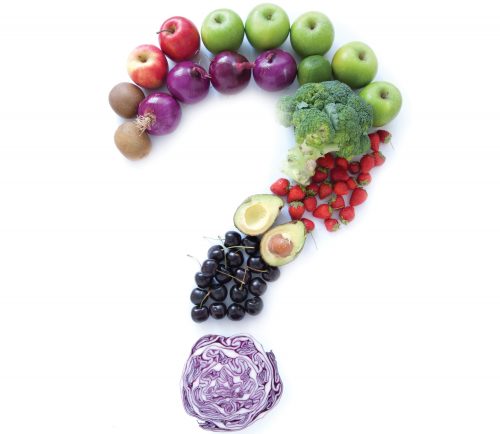
Test your nutrition IQ with our quick quiz!
Questions
1. True or false? Half a can of baked beans has more fibre than an apple
- True
- False
2. Which of the following is considered a starchy vegetable?
- Broccoli
- Capsicum
- Corn
- Spinach
3. In which foods would you find the energy-boosting mineral, iron?
- Steak
- Spinach
- Wholegrain bread
- Kidney beans
4. Rank these foods from the highest to lowest number of kilojoules.
- 2 squares (20g) Lindt dark chocolate
- small fillet (100g) NZ King salmon
- 2 slices (40g) full-fat cheddar
- 20 almonds (25g)
5. What’s the best way to get enough vitamin D for healthy bones?
6. Packaged foods are the main source of unhealthy sodium in our diets. Which is the best guide as an upper limit to look for?
- 1000mg per serve
- 600mg per serve
- 100mg per serve
7. True or false? A teaspoon of sugar has more kilojoules than a teaspoon of honey
- True
- False
8. Which bread has a lower glycaemic index (GI)?
- Sourdough
- Wholemeal
9. A good guide to a serve of red meat is…?
- Your hand
- 1/2 your plate
- Your palm
10. Which nutrient is the most filling?
- Fat
- Carbohydrate
- Protein
11. Which milk has the most protein per glass?
- Almond milk
- Trim milk
- Soy milk
- Standard (blue) milk
12. What is a healthy portion of nuts?
- 10g
- 30g
- 50g
13. Which of the following foods are gluten free?
- Potato chips
- Quinoa
- Milk chocolate
- Brown rice
- Glucose syrup
14. True or false? Coconut oil is better for you than olive oil
- True
- False
15. Sort these drinks in order of their caffeine content
- 250ml can of Red Bull
- 250ml cup of plunger coffee
- 250ml cup of instant coffee
- 250ml cup of black tea
Answers
1. True. Half a 420g can of baked beans is bursting with around10g of fibre, four to five times that of an apple. For quick, summer meals keep baked beans in the pantry, along with their high-fibre cousins chickpeas, lentils and kidney beans.
2. Corn. All veges are good for us, but some contain more carbohydrates than others. Corn, potato, yams and kumara are considered starchy veges, so include them in the carb quarter of your dinner plate. Non-starchy vegetables are low in carbs and kilojoules — think lettuce, cucumber, tomato, cauliflower, Asian greens and carrots. Fill at least half your plate with this type of vege.
3. All of them! Iron is found in both animal and plant sources, but our bodies are better able to absorb the iron found in red meat. You can increase your iron absorption from plant foods by pairing them with vitamin-C rich foods. Try adding red capsicum to your next stir-fry, or orange segments to a spinach salad.
4. Salmon (1160kJ), almonds (620kJ), cheese (600kJ), chocolate (470kJ). While NZ King salmon is considerably higher in kilojoules than a couple of squares of chocolate, it’s rich in healthy omega-3 fats and is a great source of protein. Instead of focusing solely on the kilojoule content of a food, consider its nutritional value too. Nuts are rich in protein, fibre and unsaturated fat, but will have more kilojoules than a handful of potato chips that are devoid of nutrients.
5. Adequate intakes of vitamin D are hard to achieve through diet alone. Between September and April a daily walk or another outdoor activity with some skin exposed to the sun in the early morning or late afternoon is recommended. Between May and August getting that activity in the hours around noon when UVB levels are highest, is best for vitamin D production. Vitamin D is found in small quantities in a few foods such as fatty fish (salmon, herring and mackerel). Liver, eggs and fortified foods such as margarine and some low-fat dairy products (milk and yoghurt) also contain very small amounts of vitamin D.
6. 600mg per serve. When comparing two products, use the ‘per 100g’ column and choose the one with the lowest amount of sodium. To limit the salt in your diet, look for ‘no-added-salt’ or ‘reduced-salt’ versions of pantry staples such as stock, baked beans, canned legumes and tomato paste.
7. False. Honey has 92kJ per teaspoon, whereas sugar has just 66kJ. Both are considered ‘free sugars’, the kind the World Health Organization recommends we limit our intake of. For an average adult, it’s suggested we have no more than six teaspoons of sugar each day. To put that in perspective, a 600ml bottle of Coke has 14 teaspoons of free sugars!
8. Sourdough. Both are more filling than white bread, but authentic sourdough is made with an acidic lactobacillus culture which helps lower its GI to about 54 (wholemeal is around 74, but bread will vary). Before you switch though, be aware that many supermarket sourdoughs don’t use this culture and so they have a high GI similar to white bread, which can be as high as 90.
9. Your palm. Many of us easily overdo our intake of meat, and a high intake of red meat is known to increase our risk of colorectal cancer. Wave goodbye to massive 300g T-bone steaks. When you’re shopping, look for raw cuts of around 100g-125g, which is about the size and thickness of your palm. To help you reduce your meat intake why not incorporate 1-2 meat-free meals to your week.
10. Protein. Research shows that people who follow higher protein diets experience less hunger and are better able to maintain a healthy body weight. Fibre and low-GI carbohydrates also help you stay full. So for a healthy start to the day, try a protein-rich smoothie made with fruit and reduced-fat milk, and a slice of grainy toast with peanut butter.
11. Trim milk. When the fat is removed from milk, the other components of milk (protein, carbohydrate, minerals and water content of milk) adjust upwards to compensate. This gives trim milk a high 10g of protein per glass, whereas blue top milk has 8.3g per glass. Soy milk sits at around 8g protein per glass, thanks to protein-rich soy beans or soy protein isolates. At the other end of the spectrum — almond milk has around 1.5g protein per 250ml, making it a poor substitute for cow’s milk.
12. 30g. A small handful of nuts every day has been linked to a reduced risk of heart disease. An easy way to manage your portions is to divide a large bag into smaller 30g servings in small containers or zip-lock bags. 30g of nuts is equivalent to around: 25 almonds; 20 pistachios; 31/2 (flat) tablespoons cashews; 3 (flat) tablespoons of pine nuts; or 8 Brazil nuts. Note: if you eat Brazil nuts every day, no more than 2-3 is advised, so use a variety of nuts.
13. They are all (usually) gluten free! As you can see, being gluten free doesn’t guarantee a food is healthy. So it pays to look beyond the front-of-pack marketing claims to find out what else a food contains. It pays to be careful when choosing packaged gluten-free foods such as biscuits, muffins and cake mixes — don’t be fooled by the ‘health halo’.
14. False. Gram for gram, coconut oil and olive oil both contain the same kilojoules, however olive oil contains just 17 per cent saturated fat compared to around 90 per cent in coconut oil. Much of the research used to promote coconut oil is on medium-chain triglycerides, but this evidence is misconstrued as being applicable to coconut oil. It’s not! On the other hand extra virgin olive oil is linked to reduced risk of heart disease and some cancers.
15. Black tea (57mg), Red Bull (80mg), instant coffee (83mg), plunger coffee (100mg). While some people are caffeine sensitive and need to minimise their intake, most adults can tolerate 3-400mg each day and it can even be good for us. However it’s easy to overdo the caffeine, especially with coffee on tap or large bottles of energy drink. High amounts of caffeine are really not good for us!
Article sources and references
- Eyres L. 2014. Evidence paper. Coconut oil and the heart. Heart Foundationhttps://www.heartfoundation.org.nz/resources/coconut-oil-and-the-heart-evidence-paper
- Heart Foundation. 2012. Position Statement: Nuts and heart healthhttps://www.heartfoundation.org.nz/resources/nuts-and-heart-health-position-statement
- Ministry of Health and Cancer Society of New Zealand. 2012. Consensus Statement on Vitamin D and Sun Exposure in New Zealand. Wellington: Ministry of Health.https://www.health.govt.nz/system/files/documents/publications/vitamind-sun-exposure.pdf
- Mofidi A et al. 2012. The acute impact of ingestion of sourdough and whole-grain breads on blood glucose, insulin, and incretins in overweight and obese men. Journal of Nutrition and Metabolism 184710https://www.ncbi.nlm.nih.gov/pubmed/22474577
- Ortinau LC et al. 2014. Effects of high-protein vs. high- fat snacks on appetite control, satiety, and eating initiation in healthy women. Nutrition Journal 13:97https://www.ncbi.nlm.nih.gov/pmc/articles/PMC4190484/
- Sivakumaran S et al. 2013. The Concise New Zealand Food Composition Tables, 10th ed. Palmerston North: The New Zealand Institute for Plant & Food Research Limited and Ministry of Healthhttps://www.foodcomposition.co.nz/downloads/concise-10-edition.pdf
- Weigle et al. 2005. A high-protein diet induces sustained reductions in appetite, ad libitum caloric intakes, and body weight despite compensatory changes in diurnal plasma leptin and ghrelin concentrations. American Journal of Clinical Nutrition 82: 41-48https://www.ncbi.nlm.nih.gov/pubmed/16002798
www.healthyfood.com


